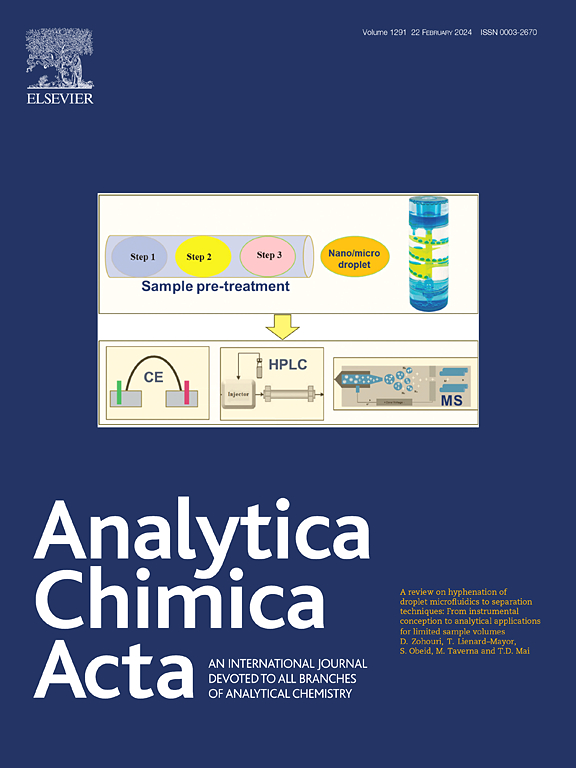Advances in metallic nanostructures-assisted laser desorption/ionization mass spectrometry imaging of biological samples: A review
IF 5.7
2区 化学
Q1 CHEMISTRY, ANALYTICAL
引用次数: 0
Abstract
Background
Mass spectrometry imaging (MSI) has emerged as a powerful tool for the spatial visualization of biomolecules, driving advances in diverse fields such as biomedical research, plant metabolomics, and forensic science. Incorporating nanostructures, particularly metallic and metal oxide nanoparticles, has revolutionized laser desorption/ionization (LDI)-MSI by enhancing ionization efficiency, spatial resolution, and sensitivity.Results
This review focuses on the preparation, application, and performance of various metallic nanostructures (e.g., gold, silver, platinum, and metal oxides) in LDI-MSI, emphasizing both fundamental physicochemical properties and their role in improving sensitivity, spatial resolution, and data reproducibility.Significance
We provide a comparative assessment of metallic nanostructures versus other types of nanomaterials (quantum dots, carbon-based materials), highlight key advantages and current limitations, and offer a roadmap for future developments in nanomaterial-assisted MSI, including prospective strategies for stabilizing and functionalizing surfaces, exploring alternative laser wavelengths, and ensuring robust analytical workflows.

金属纳米结构辅助生物样品激光解吸/电离质谱成像研究进展
质谱成像(MSI)已成为生物分子空间可视化的有力工具,推动了生物医学研究、植物代谢组学和法医学等多个领域的进步。结合纳米结构,特别是金属和金属氧化物纳米颗粒,通过提高电离效率、空间分辨率和灵敏度,彻底改变了激光解吸/电离(LDI)-MSI。本文综述了各种金属纳米结构(如金、银、铂和金属氧化物)在LDI-MSI中的制备、应用和性能,重点介绍了基本的物理化学性质及其在提高灵敏度、空间分辨率和数据可重复性方面的作用。我们提供了金属纳米结构与其他类型纳米材料(量子点,碳基材料)的比较评估,突出了关键优势和当前的局限性,并为纳米材料辅助MSI的未来发展提供了路线图,包括稳定和功能化表面的前瞻性策略,探索替代激光波长,并确保稳健的分析工作流程。
本文章由计算机程序翻译,如有差异,请以英文原文为准。
求助全文
约1分钟内获得全文
求助全文
来源期刊

Analytica Chimica Acta
化学-分析化学
CiteScore
10.40
自引率
6.50%
发文量
1081
审稿时长
38 days
期刊介绍:
Analytica Chimica Acta has an open access mirror journal Analytica Chimica Acta: X, sharing the same aims and scope, editorial team, submission system and rigorous peer review.
Analytica Chimica Acta provides a forum for the rapid publication of original research, and critical, comprehensive reviews dealing with all aspects of fundamental and applied modern analytical chemistry. The journal welcomes the submission of research papers which report studies concerning the development of new and significant analytical methodologies. In determining the suitability of submitted articles for publication, particular scrutiny will be placed on the degree of novelty and impact of the research and the extent to which it adds to the existing body of knowledge in analytical chemistry.
 求助内容:
求助内容: 应助结果提醒方式:
应助结果提醒方式:


